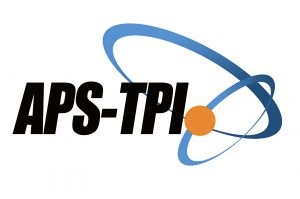ENHANCING STUDENTS’ PROBLEM SOLVING THROUGH A FLIPPED CASED-BASED LEARNING
Abstract
The implementation of flipped classroom has become popular in higher education. However, few studies have conducted on how to expand various instructional strategies into a flipped classroom practice, which is important to learning. Meanwhile, prior studies have examined the effect of case-based learning (CBL) on improving student problem solving ability. The present study thus proposed a flipped classroom combined with CBL, an extension of the classic flipped classroom model. The present study also examined the effect of flipped classroom combined with CBL on students’ problem-solving ability. To compare the effect of CBL on student problem solving in a flipped classroom, we conducted a quasi-experimental design study with three classes involving 94 students in a private university in Indonesia. Across 7 weeks, where one experimental group received Flipped classroom combined with CBL and a second experimental group received the flipped classroom model, while the control group received regular classroom activities. The results indicated that learning through the flipped classroom combined with CBL resulted in better problem-solving ability compared to the flipped classroom model and conventional method. The findings imply that a flipped classroom combined with CBL is effective in cultivating students’ problem-solving ability and need to be replicated that involve larger groups of participants
References
Alaagib, N. A., Musa, O. A., & Saeed, A. M. (2019). Comparison of the effectiveness of lectures based on problems and traditional lectures in physiology teaching in Sudan. BMC Medical Education, 19(1). https://doi.org/10.1186/s12909-019-1799-0
Brandon, A. F., & All, A. C. (2010). Constructivism theory analysis and application to curricula. Nursing Education Perspectives, 31(2).
Cai, L., Li, Y., Hu, X., & Li, R. (2022). Implementation of flipped classroom combined with case-based learning. Medicine, 101(5), e28782. https://doi.org/10.1097/MD.0000000000028782
Cohen, J. (1988). Statistical power analysis for the behavioral sciences (2nd ed.). Lawrence Erlbaum Associate.
Jonassen, D. H. (2010). Learning to solve problems: A handbook for designing problem-solving learning environments. In Learning to Solve Problems: A Handbook for Designing Problem-Solving Learning Environments (Vol. 9780203847527). https://doi.org/10.4324/9780203847527
Jonassen, D. H., & Hernandez-Serrano, J. (2002). Case-based reasoning and instructional design: Using stories to support problem solving. Educational Technology Research and Development, 50(2). https://doi.org/10.1007/BF02504994
Kaddoura, M. A. (2011). Critical Thinking Skills of Nursing Students in Lecture-Based Teaching and Case-Based Learning. International Journal for the Scholarship of Teaching and Learning, 5(2). https://doi.org/10.20429/ijsotl.2011.050220
McLean, S. F. (2016). Case-Based Learning and its Application in Medical and Health-Care Fields: A Review of Worldwide Literature. Journal of Medical Education and Curricular Development, 3, JMECD.S20377. https://doi.org/10.4137/jmecd.s20377
Roshangar, F., Azar, E. F., Sarbakhsh, P., & Azarmi, R. (2020). The Effect of Case-Based Learning with or without Conceptual Mapping Method on Critical Thinking and Academic Self-Efficacy of Nursing Students. Journal of Biochemical Technology, 11(1).
Strayer, J. (2017). Designing Instruction for Flipped Classroom. In C. Reigeluth, B. Beatty, & R. Myers (Eds.), Instructional-Design Theories and Models: The Learner-Centered Paradigm of Education (4th ed.). Routledge.
Tucker, B. (2012). The Flipped Classroom: Online instruction at home frees class time for learning. In Education Next (Vol. 12, Issue 1).
Tuckman, B. W., & Harper, B. E. (2012). Conducting Educational Research (Sixth). Rowman & Littlefield Publishers, Inc.
Williams, B. (2005). Case based learning - A review of the literature: Is there scope for this educational paradigm in prehospital education? In Emergency Medicine Journal (Vol. 22, Issue 8). https://doi.org/10.1136/emj.2004.022707
Yang, F., Lin, W., & Wang, Y. (2021). Flipped classroom combined with case-based learning is an effective teaching modality in nephrology clerkship. BMC Medical Education, 21(1), 276. https://doi.org/10.1186/s12909-021-02723-7
Downloads
Published
How to Cite
Issue
Section
 Abstract views: 290
,
Abstract views: 290
, PDF Downloads: 280
PDF Downloads: 280






